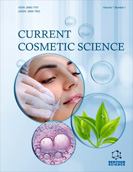Abstract
Background: Neem (Azadirachta indica) can be considered as a boon to mankind as it possesses innumerable medicinal benefits despite being cost effective. Its use as an anti-acne agent is widely anticipated. A topical formulation of neem leaf powder as hydrogel was prepared recognizing the use of its phytoconstituents in many skin therapies. The primary goal of topical formulations is to provide drug contact with the skin while reducing overall absorption.
Aim: The aim of this study was to evaluate the anti-acne potential of Neem leaves powder hydrogel.
Method: Neem leaf powder was tested for its organoleptic and physical characteristics. Neem leaf hydrogel was prepared in a 1% w/v carbopol gel and evaluated by agar disk diffusion. A 3% w/w (F1) and 2% w/w (F2) hydrogel was prepared by adding 3 g and 2 g of Neem leaf powder respectively, making a volume of 100 ml, and was evaluated for various parameters. A comparative evaluation tests were conducted for F1, F2 and 1% w/v carbopol gel (blank). After the test results, F1 was optimized for pH and viscosity by adding triethanolamine. Optimized F1 was tested against 1% w/w salicylic acid gel, and Zitcare-S (Standard) for anti-acne activity. Agar plates were prepared and a well was dug using a borer. The wells were filled with the F1, standard and blank, inoculated by the Staphylococcus aureus using the spread culture technique. The plates were incubated for 24 hours at standard conditions.
Results: F1, F2, blank and standard were tested for their viscosity, spreadability, pH and some organoleptic parameters. The test results from F1 and F2 suggested F1 to be a more efficient hydrogel. Standard, blank and F1 were tested using agar well diffusion technique. After the incubation period, the plates were taken out and kept on a white sheet. Using a meter scale, the radius of the zone of inhibition was determined. It was found that F1 gave 1.7 cm, standard gave 1.3 cm and blank gave 0 cm radius size zone of inhibition.
Conclusion: Test results suggest that F1 has better spreadability and viscosity in comparison to F2. This study concludes that F1 is a more stable and efficient formulation as a hydrogel with efficient spreadability and optimum viscosity. F1 has better anti-bacterial activity than the standard and has better anti-acne potential.
[PMID: 10783742]
[http://dx.doi.org/10.3329/bjp.v3i1.836]
[http://dx.doi.org/10.1007/s10637-009-9263-3] [PMID: 19458912]
[PMID: 9717455]
[http://dx.doi.org/10.1002/ptr.1474] [PMID: 15174005]
[http://dx.doi.org/10.1139/cjpp-2013-0449] [PMID: 24708208]
[PMID: 24453446]
[http://dx.doi.org/10.1089/fpd.2007.0040] [PMID: 18041957]
[PMID: 5485844]
[http://dx.doi.org/10.1055/s-2007-971474] [PMID: 7345443]
[http://dx.doi.org/10.4103/ijmr.IJMR_1899_19] [PMID: 13664335]
[PMID: 13538534]
[http://dx.doi.org/10.4103/0378-6323.51258] [PMID: 19439902]
[PMID: 20725545]
[http://dx.doi.org/10.4103/0019-5154.43213] [PMID: 19882009]
[http://dx.doi.org/10.3923/pjbs.2017.350.354] [PMID: 29023067]
[http://dx.doi.org/10.1111/exd.13296] [PMID: 28094874]
[http://dx.doi.org/10.2147/CCID.S84765] [PMID: 26347269]
[http://dx.doi.org/10.1111/jphp.12093] [PMID: 23837583]
[http://dx.doi.org/10.1517/17425247.2.3.489] [PMID: 16296770]
[http://dx.doi.org/10.1016/j.bbamem.2009.08.015] [PMID: 19733150]
[http://dx.doi.org/10.1021/ma9704018]
[http://dx.doi.org/10.1179/1743280414Y.0000000045]
[http://dx.doi.org/10.1590/0001-3765201620160162] [PMID: 27925034]
[http://dx.doi.org/10.1016/j.progpolymsci.2007.05.003]
[http://dx.doi.org/10.1016/j.jpha.2015.11.005] [PMID: 29403965]
[http://dx.doi.org/10.21010/ajtcam.v12i5.18]
[http://dx.doi.org/10.1016/j.ijid.2003.03.002] [PMID: 14690779]














